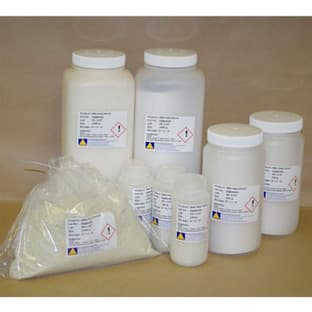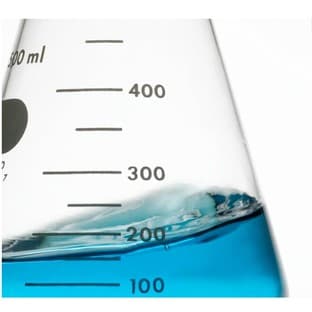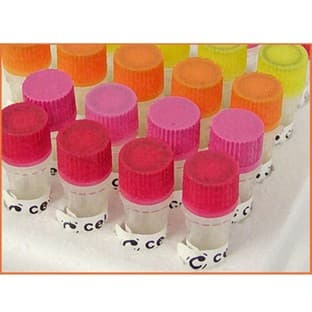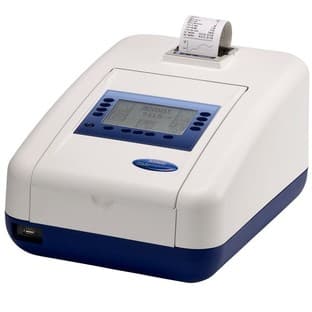
Supplier:
United States BiologicalCat no: L2200-01A
Lims1, Control Peptide
Prices direct from United States Biological
Quick response times
Exclusive Biosave savings/discounts
SPECIFICATIONS
Catalog Number
L2200-01A
Size
1mg
Form
Supplied as a lyophilized powder.
References
Agulnick, A. D., et al. (1996). Interactions of the LIM-domain-binding factor Lbd1 with LIM homeodomain proteins. Nature 384: 270-272. Medline abstract: 97078753 \n\nBeck, C. W. and Slack, J. M. W. (1998). Analysis of the developing Xenopus tail bud reveals separate phases of gene expression during determination and growth. Mech. Dev. 72(1-2): 41-52. Medline abstract: 98202511 \n\nBreen, J. J., et al. (1998). Interactions between LIM Domains and the LIM Domain-binding Protein Ldb1. J. Biol. Chem. 273(8): 4712-4717. Medline abstract: 98136177 \n\nChan, T.-c., Takahashi, S. and Asashima, M. (2000). A Role for Xlim-1 in pronephros development in Xenopus laevis. Dev. Biol. 228: 256-269. Medline abstract: 20564079 \n\nDawid, I. B., Toyama, R. and Taira, M. (1995). LIM domain proteins. C R Acad Sci III 318: 295-306. Medline abstract: 95308295 \n\nEnsini, M., et al. (1998). The control of rostrocaudal pattern in the developing spinal cord: specification of motor neuron subtype identity is initiated by signals from paraxial mesoderm. Development 125: 969-982. Medline abstract: 98130557 \n\nFernandez-Funez, P., et al. (1998). The relative expression amounts of apterous and its co-factor dLdb/Chip are critical for dorso-ventral compartmentalization in the Drosophila wing. EMBO J. 17: 6846-6853. Medline abstract: 99059722 \n\nFujii, T., et al. (1994). Expression patterns of the murine LIM class homeobox gene lim1 in the developing brain and excretory system. Dev. Dyn. 199(1): 73-83. Medline abstract: 94220754 \n\nGupta, B. P. and Sternberg, P. W. (2002). Tissue-specific regulation of the LIM homeobox gene lin-11 during development of the Caenorhabditis elegans egg-laying system. Dev. Bio. 247: 102-115. Medline abstract: 12074555 \n\nGupta, B. P., Wang, M. and Sternberg, P. W. (2003). The C. elegans LIM homeobox gene lin-11 specifies multiple cell fates during vulval development. Development 130: 2589-2601. Medline abstract: 12736204 \n\nHobert, O., et al. (1998). Control of neural development and function in a thermoregulatory network by the LIM homeobox gene lin-11. J. Neurosci. 18(6): 2084-2096. Medline abstract: 98151395 \n\nHukriede, N. A., et al. (2003). Conserved requirement of Lim1 function for cell movements during gastrulation. Dev. Cell 4: 83-94. Medline abstract: 12530965 \n\nKaravanov, A. A., et al. (1996). The LIM homeodomain protein Lim-1 is widely expressed in neural, neural crest and mesoderm derivatives in vertebrate development. Int. J. Dev. Biol. 40(2): 453-61. Medline abstract: 96385785 \n\nKobayashi, A., Shawlot, W., Kania, A. and Behringer, R. R. (2003). Requirement of Lim1 for female reproductive tract development. Development 131: 539-549. Medline abstract: 14695376 \n\nLi, Y., et al. (1999). Sequence and genomic organization of the mouse Lim1 gene. Mamm. Genome 10(5): 444-6. Medline abstract: 99269909 \n\nLilly, B., et al. (1999). The LIM homeodomain protein dLim1 defines a subclass of neurons within the embryonic ventral nerve cord of Drosophila. Mech. Dev. 88(2): 195-205. Medline abstract: 20005796 \n\nMorcillo, P., et al. (1997). Chip, a widely expressed chromosomal protein required for segmentation and activity of a remote wing margin enhancer in Drosophila. Genes Dev. 11(20): 2729-2740. Medline abstract: 97477378 \n\nO'Keefe, D. D., Thor, S. and Thomas, J. B. (1998). Function and specificity of LIM domains in Drosophila nervous system and wing development. Development 125(19): 3915-3923. Medline abstract: 98399917 \n\nPerea-Gomez, A., et al. (1999). HNF3beta and Lim1 interact in the visceral endoderm to regulate primitive streak formation and anterior-posterior polarity in the mouse embryo. Development 126: 4499-4511. Medline abstract: 99429810 \n\nPueyo, J. I., et al. (2000). Proximal-distal leg development in Drosophila requires the apterous gene and the Lim1 homologue dlim1 Development 127: 5391-5402. Medline abstract: 20530492 \n\nRebbert, M. L. and Dawid, I. B. (1997). Transcriptional regulation of the xlim-1 gene by activin is mediated by an element in intron I. Proc. Natl. Acad. Sci. 94(18): 9717-9722. Medline abstract: 97420748 \n\nSarafi-Reinach, T. R., et al. (2001). The lin-11 LIM homeobox gene specifies olfactory and chemosensory neuron fates in C. elegans. Development 128: 3269-3281. Medline abstract: 11546744 \n\nShawlot, W. and Behringer, R. R. (1995). Requirement for Lim1 in head-organizer function. Nature 374(6521): 425-30. Medline abstract: 95214746 \n\nShawlot, W., et al. (1999). Lim1 is required in both primitive streak-derived tissues and visceral endoderm for head formation in the mouse. Development 126: 4925-4932. Medline abstract: 20002425 \n\nSockanathan, S. and Jessell, T. M. (1998). Motor neuron-derived retinoid signaling specifies the subtype identity of spinal motor neurons. Cell 94(4): 503-14. Medline abstract: 98394476 \n\nTaira, M., Jamrich, M., Good, P. J. and Dawid, I. B. (1992). The LIM domain-containing homeo box gene Xlim-1 is expressed specifically in the organizer region of Xenopus gastrula embryos. Genes Dev. 6(3): 356-66. Medline abstract: 92192449 \n\nTaira, M., Otani, H., Jamrich, M. and Dawid, I. B. (1994a). Expression of the LIM class homeobox gene Xlim-1 in pronephros and CNS cell lineages of Xenopus embryos is affected by retinoic acid and exogastrulation. Development 120(6): 1525-36. Medline abstract: 94326650 \n\nTaira, M., et al. (1994b). Role of the LIM class homeodomain protein Xlim-1 in neural and muscle induction by the Spemann organizer in Xenopus. Nature 372(6507): 677-9. Medline abstract: 95082944 \n\nTaira, M., Saint-Jeannet, J.-P. and Dawid, I. B. (1997). Role of the Xlim-1 and Xbra genes in anteroposterior patterning of neural tissue by the head and trunk organizer. Proc. Natl. Acad. Sci. 94: 895-900. Medline abstract: 97175698 \n\nThor, S., Andersson, S. G., Tomlinson, A., Thomas, J. B., 1999. A LIM-homeodomain combinatorial code for motor-neuron pathway selection. Nature 397: 76-80. Medline abstract: 99107375 \n\nToyama, R., et al. (1995). Nodal induces ectopic goosecoid and lim1 expression and axis duplication in zebrafish. Development 121: 383-391. Medline abstract: 95285760 \n\nTsuchida, T., et al. (1994). Topographic organization of embryonic motor neurons defined by expression of LIM homeobox genes. Cell 79: 957-970. Medline abstract: 95094281 \n\nTsuji, T., et al. (2000). Requirements of Lim1, a Drosophila LIM-homeobox gene, for normal leg and antennal development. Development 127: 4315-4323. Medline abstract: 20461140 \nLim1: Biological Overview | Evolutionary Homologs | Regulation | Developmental Biology | Effects of Mutation \n\nflybase-help AT morgan.harvard.edu
SUPPLIER INFO
Applications
ELISA
Reactivities
Hum
Applications
IF
Hosts
Mouse
Applications
ELISA, WB
Hosts
Mouse
Reactivities
Hum
Applications
ELISA, FC, WB
Hosts
Mouse
Reactivities
Hum
Applications
ELISA, FC, IHC, WB
Hosts
Mouse
Applications
IHC, WB
Hosts
Rabbit
Reactivities
Hum
Applications
ELISA, WB
Hosts
Rabbit
Reactivities
Hum
Latest promotions
Spend less time on DNA cleanup so you can do more science. The MSB Spin PCRapace is the fastest way to purify your DNA from PCR, restriction digestion, and...
New brilliant antibodies, and new lower prices!For flow cytometry reagents in general, \"bright is better.\" The violet-excitable BD Horizon™ BV421 and...
As an incentive to qualify our BSA, we are offering a 20% discount when you purchase your first 100g, 500g or 1000g of any grade of Bovine Serum Albumin....
It is not every day that you are given something for nothing. We are giving away additional spectrophotometer software.Cecil Instruments have enhanced the...
We're so sure that you'll prefer Cayman Assay kits over your present brand that we're willing to give you a free assay kit to prove it!
Did your supplier increase the price of Fetal Bovine Serum? Did they substitute the US Origin with USDA? Well say no more! Innovative Research is still...
For the past decade scientists have extensively used ATS secondary toxin conjugates to make their own targeted toxins for in vitro use.The ability to combine...
10% Discount on 2 Rabbit Polyclonal Antibody Service. With over 20 years experience, SDIX has developed into the premier US custom antibody producer,...
Bulk Cytokines with Custom Vialing.20 - 50% off cytokines, growth factors, chemokines and more...For a limited time Cell Sciences is offering substantial...
Jenway’s 73 series spectrophotometer range provides four models with a narrow spectral bandwidth of 5nm and an absorbance range of –0.3 to 2.5A,...
Are you planning to have a customised antibody made for your research?Since 2000, Everest has been producing a catalog containing thousands of affinity...
Top suppliers
United States Biological
230753 products
Carl Zeiss Microscopy
27 products
Promega Corporation
11 products
Panasonic Healthcare Company
5 products
Life Technologies
1 products
Nikon Instruments Europe
11 products
Olympus Europa Holding GmbH
3 products
Leica Microsystems, Inc.
10 products
GE Healthcare Life Sciences
2 products
Tecan Trading AG
19 products
Beckman Coulter, Inc.
1 products
AB SCIEX
3 products
BD (Becton, Dickinson and Company)
1 products
RANDOX TOXICOLOGY
5 products
Randox Food Diagnostics
6 products



















